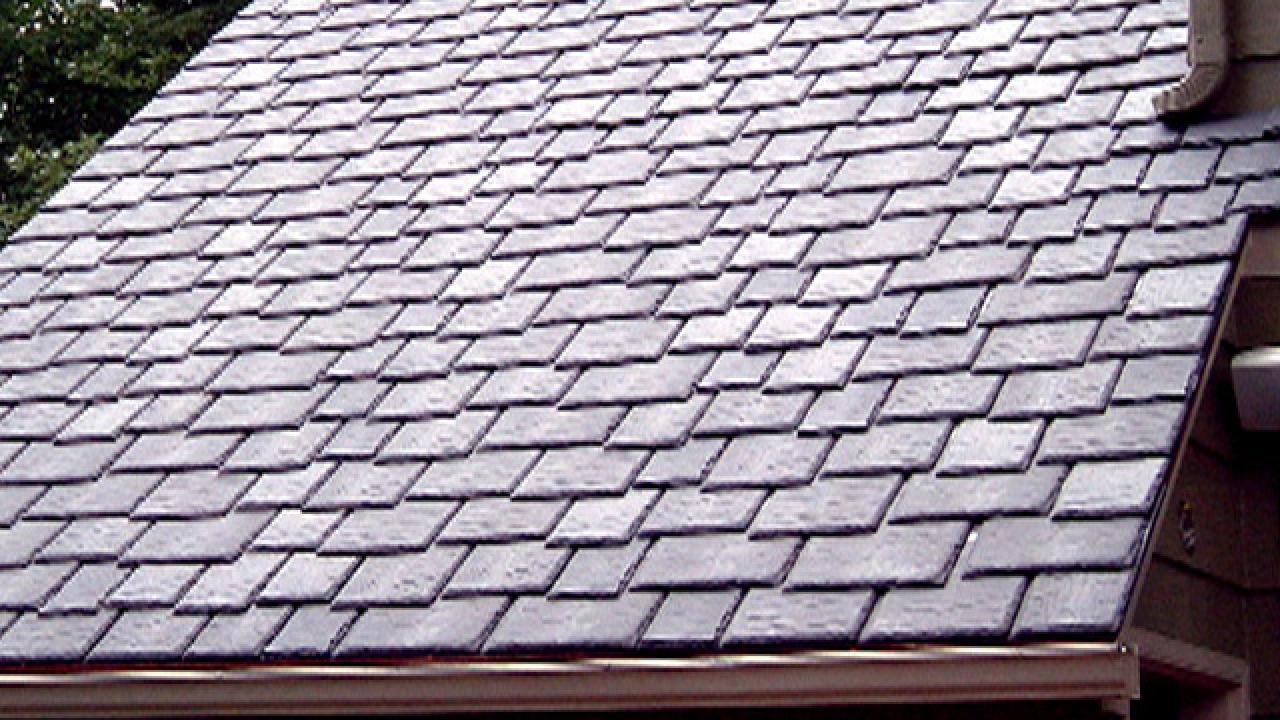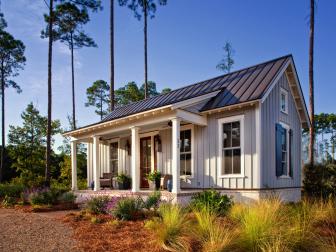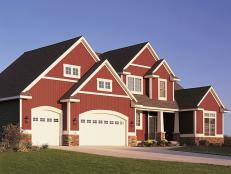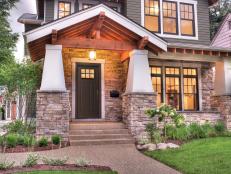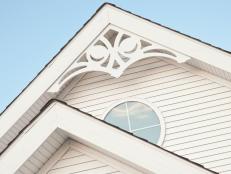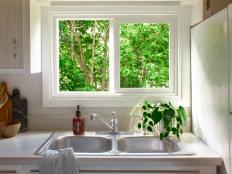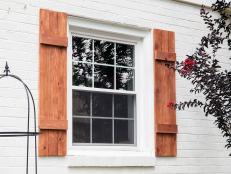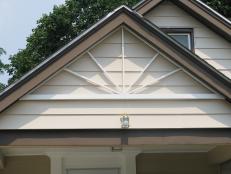Top 6 Roofing Materials
From wood shake to asphalt shingles, roofing material is an important consideration that contributes to the overall look and style of your home.
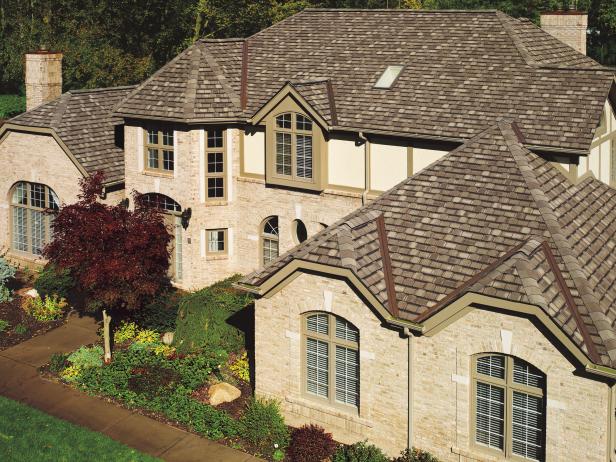
Jeff Herbert
Updating your existing roof allows you to add value to your home and communicate your home's look and feel. While roof framing, preparation and proper installation are always important, the material you choose for your roof can bring the exterior of your home to the next level.
"It's really an opportunity to upgrade your home in terms of look, style and color," says Tom Bollnow, senior director of technical services for the National Roofing Contractors Association (NRCA).
When choosing roofing materials, consider the following questions.
- How heavy is this material and will it require special framing?
- Is the material available in a variety of colors and styles that complement your home?
- Does the material meet the fire codes in your local area?
- Are there special installation and maintenance issues to consider?
- Does this material offer good performance in extreme weather conditions that are common in your area?
- What is the cost, life span and warranty for this product?
The answers to those questions will help you determine the best choice for your home. There are lots of options for roofing materials available and here is a rundown of some of the most popular ones.

Getty Images; JamesBrey
Asphalt Shingle Roof
Asphalt Shingles
The most common residential roofing material used in the United States, asphalt shingles are popular because they are economical and easy to install. These shingles can be reinforced with fiberglass or organic materials (cellulose) without changing the appearance of the shingle.
Pros: Asphalt comes in a variety of colors, is widely available and is one of the least expensive materials.
Cons: Asphalt has a shorter life span than other roofing materials, doesn't provide the insulation other materials offer, and the quality varies.
House Styles: Asphalt shingles work with many architectural styles, especially traditional suburban styles.
Cost and Life Span: Prices range from $70 to $120 a square and, if maintained properly, shingles will last 20 to 25 years.
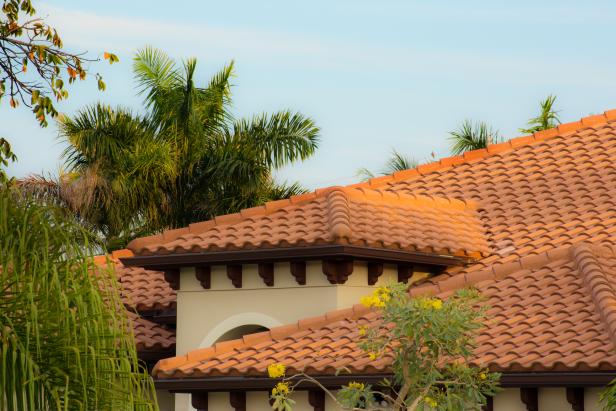
Getty Images; irabassi
Clay Tile Roof
Clay and Concrete Tiles
Clay and concrete tiles add texture and elegance to a roof. Genuine flat, ribbed or scalloped clay tiles are extremely durable but also very heavy, and must be installed by a professional. Concrete tiles are versatile and are less expensive than genuine clay, but also have a heavy weight.
Pros: Clay and concrete tiles are long-lasting and non-combustible, and concrete tiles are energy efficient.
Cons: Clay and concrete tiles are expensive, heavy and usually require additional framing.
House Styles: Clay and concrete tiles work well with Mediterranean, Mission, Southwestern and Spanish-style homes.
Cost and Life Span: Prices start around $300 to $500 a square and, if maintained properly, tiles will last around 40 to 50 years.

Nick Johnson
Metal Roof
Metal Roofing
Metal roofs are resistant to extreme weather conditions. Available in two types, panels and shingles, metal roofs come in aluminum, copper, stainless steel and zinc.
"They're sleek, lightweight, long-lasting and recyclable, and something to consider if you're interested in rainwater harvesting," says architect Amy A. Alper.
Metal Roofing: Everything You Need to Know 20 Photos
Interested in a metal roof? Get the scoop on this environmentally friendly option with helpful info from the professionals.
Pros: Metal roofing is durable, lasts longer than asphalt or wood, and offers high solar reflectance.
Cons: Metal roofing is relatively expensive.
House Styles: Metal looks great on bungalows, cabins, contemporary and cottage-style homes.
Cost and Life Span: Prices usually start around $100 to $300 a square, but some styles can cost $600 to $800 a square. Metal roofing can last 40 to 75 years.
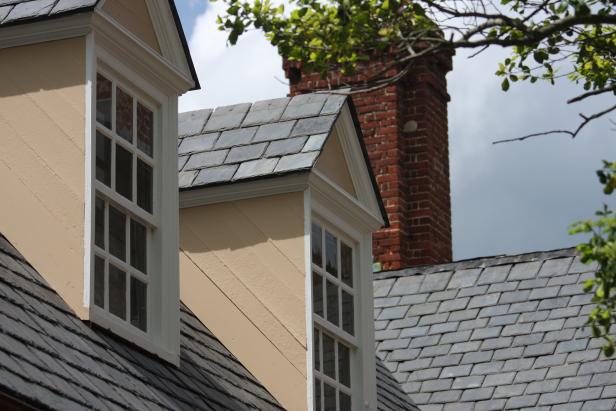
Getty Images; DGLowrie
Slate Roof Tiles
Slate
Offering lots of beauty and a distinctive elegant appearance, slate colors include shades of black, green, grey, red and purple.
Pros: Slate is very durable, fire-resistant and a sustainable roof that can be recycled.
Cons: Slate is expensive, heavy, and requires extra framing and professional installation. The quality can vary with imported slate.
House Styles: Slate works well with Colonial, European and French chateau homes.
Cost and Life Span: Prices start at about $600 a square and up. Slate can last more than 50 years and sometimes 100 years or more.

Photo courtesy of DaVinci Roofscapes
Wood Roof Shingles
Wood Shingles and Shake
The go-to roofing choice for hundreds of years, many homeowners love the look of wood shingles and shakes and how they weather to an attractive shade of gray. Wood shakes are handmade and rougher-looking than wood shingles, which are usually cut by machine.
If you live in a fire-prone area, look for Class A fire-rated wood roofing products that include shingles treated with a fire-resistant coating.
Pros: Wood shingles offer a rustic look and are a natural product usually made from cedar, redwood and southern pine.
Cons: Fire codes in some areas prohibit use. Wood shingles can be a concern in wet climates, and can mold, split or rot.
House Styles: Shake's rustic aesthetic pairs well with bungalow, Cape Cod, cottage, Craftsman and Tudor-style homes.
Cost and Life Span: Prices start at around $100 to $150 a square and will last around 25 to 30 years.

Getty Images; WichitS
Rubber Roof Tiles
Synthetic Roofing Products
There are now synthetic roofing products, including rubber, plastic and polymer roofing, developed to give you the color, look and texture of natural materials like slate and wood. These products are designed to be strong and easy to maintain. Some of these materials are fire-resistant.
The Benefits of Synthetic Slate Shingles
They're more durable, easier to install and much less expensive than authentic slate.
Make sure to check with the manufacturer and inquire about warranty information. The National Roofing Contractors Association (NRCA) suggests you look at full-size samples of the synthetic product and the manufacturers' brochures.
"Look for installations that have been in place at least 10 years to see what the wear characteristics of that material are in your area," says Bollnow.
Pros: Synthetic roofing is often not as fragile, heavy or expensive as natural products.
Cons: Some of these products can absorb water and the quality varies. Newer products aren't as time-tested as traditional materials.
House Styles: Synthetic roofing products work with different architectural styles.
Cost and Life Span: Prices start at about $300 a square, and are warrantied for up to 50 years.
